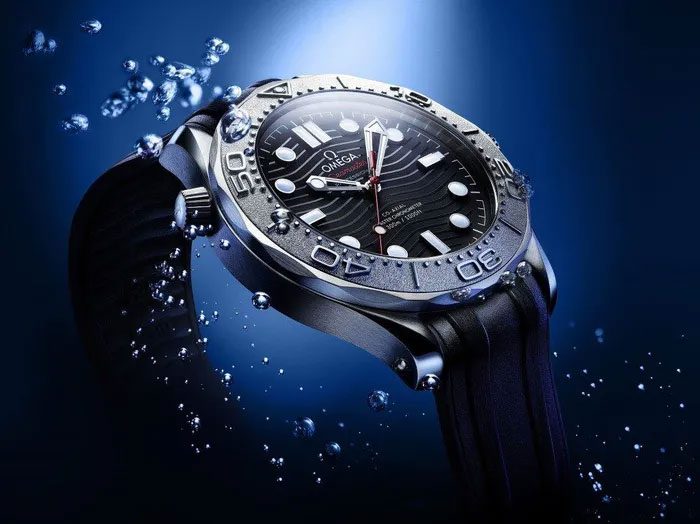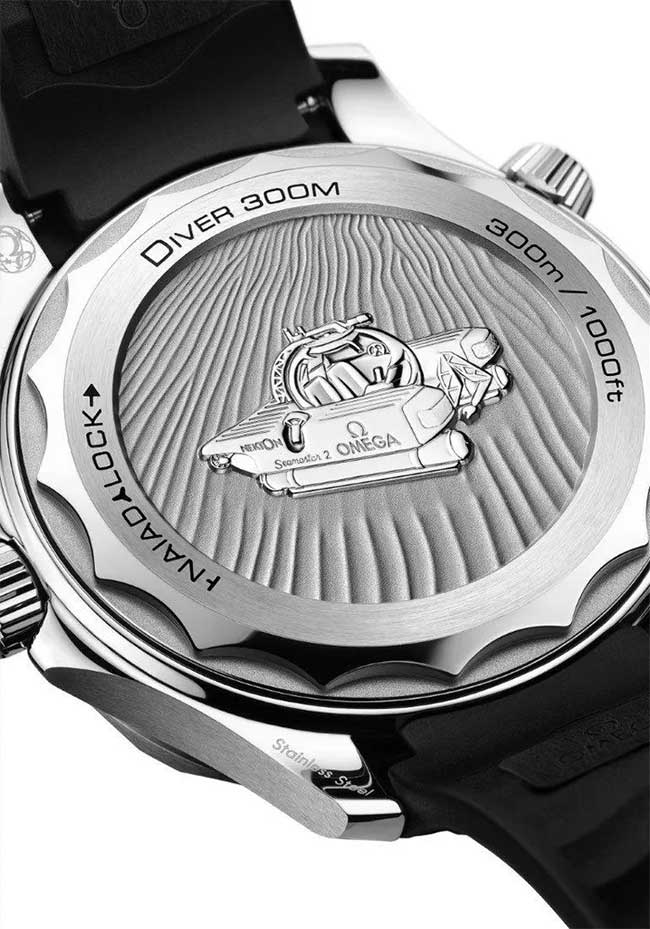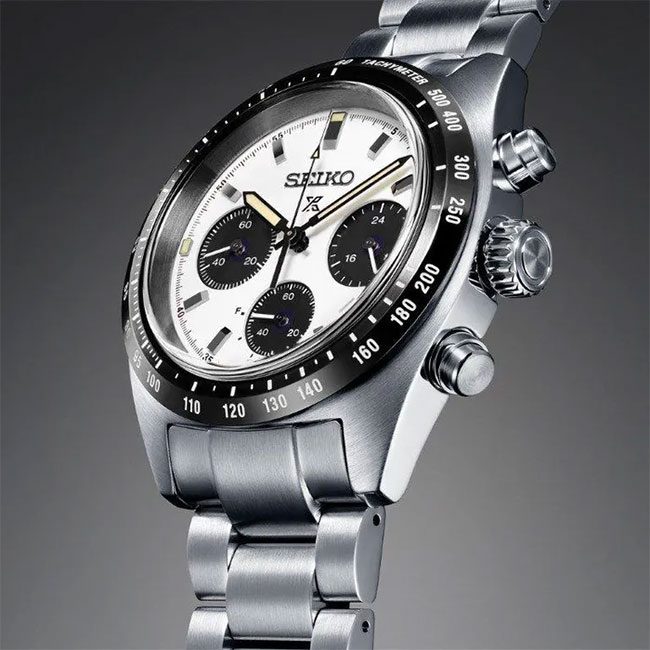Let’s explore the differences between water-resistant and waterproof watches in the article below!
Water-Resistant vs. Waterproof: What’s the Difference?
In the field of watchmaking, the distinction between water-resistant and waterproof watches often confuses enthusiasts. Although these terms are commonly used interchangeably, they reveal unique characteristics about the durability of watches.
What Does Water-Resistant Mean?
Water-resistant watches: These timepieces have a certain degree of resistance to water, indicating their ability to withstand moisture to some extent. Each watch, regardless of brand or model, has different water resistance levels, typically ranging from 1 ATM (10 meters) to 30 ATM (300 meters) and sometimes even exceeding these thresholds.

The terms water-resistant and waterproof reveal distinct features of watches.
What Does Waterproof Mean?
Waterproof watches: In contrast, waterproof watches indicate a higher level of water protection, showcasing the watch’s ability to keep water out. It suggests that under no circumstances should water penetrate the watch case and infiltrate its inner mechanisms. However, it is important to acknowledge that even the most perfect watches experience gradual permeation over time due to natural aging and prolonged exposure to harsh environmental conditions.
In summary, James Bond might wear a waterproof watch while diving to the ocean floor to retrieve a briefcase filled with money off the coast of Puerto Rico, while a waterproof watch can be worn by an everyday person.

Waterproof watches showcase a higher level of water resistance.
Maintaining Integrity: The Role of Gaskets
The integrity of water-resistant or waterproof watches heavily relies on the effectiveness of the gaskets, typically made of rubber or plastic. These seals play a vital role in reinforcing the watch’s structure, preventing water from entering its delicate components. However, prolonged exposure to extreme temperatures can accelerate the degradation process of the gaskets, necessitating regular maintenance, ideally every two years, to ensure optimal functionality.
Decoding Water Resistance Ratings
Although modern watches prominently display their water resistance ratings on the case back, interpreting these figures is not always straightforward. Contrary to popular belief, the designated water resistance does not equate to the safe operational depth of the watch in water. For instance, a watch rated for water resistance at a depth of 100 meters may not sustain prolonged exposure at such depths without risking damage.
Terms like “atmosphere” (ATM) and “bar” serve as important metrics, informing you about the watch’s resilience against external pressure. ATM, short for atmosphere, represents atmospheric pressure at sea level. In contrast, one bar indicates a unit of pressure equivalent to 1 atmosphere. 1 ATM is roughly equivalent to water pressure at a depth of 10 meters.
Regulatory Framework: ISO Standards
To standardize water resistance criteria in the watchmaking industry, regulatory bodies such as the International Organization for Standardization (ISO) have established comprehensive guidelines. ISO 2281, established in 1990, outlines rigorous testing processes, including condensation tests, air resistance assessments, and water pressure evaluations, among other content. This standard also prohibits the use of the term “waterproof” to describe watches.
Building on ISO 2281, ISO 6425, introduced in 1996, sets stringent criteria for watches capable of withstanding depths exceeding 100 meters. These criteria include a range of tests, such as reliability assessments, evaluations of saltwater resistance, and protocols for mixed gas diving functions, demonstrating the comprehensive nature of the standard and its commitment to ensuring watch reliability in demanding marine environments.

ISO 6425 sets stringent criteria for watches capable of withstanding depths exceeding 100m.
Frequently Asked Questions
Can I Swim with a Water-Resistant Watch?
Yes, you can swim with a water-resistant watch, but the level of water resistance determines its suitability for underwater activities. Watches with higher water resistance ratings, often measured in bars (BAR), atmospheres (ATM), or meters (m), are designed to withstand immersion in water without damage.
Check the water resistance rating: Ensure your watch is rated for swimming by checking its water resistance specifications. A rating of at least 10 BAR or 100 meters is generally considered suitable for swimming.
Consider underwater activities: While some water-resistant watches are suitable for swimming, others may be specifically designed for diving or high-impact water sports. Understand your watch’s intended use to ensure it meets your needs.
Regular maintenance: Even with a water-resistant watch, maintaining its water resistance is crucial. Ensure the gaskets are intact and the watch is serviced regularly to uphold its water resistance.
Is Waterproof Better than Water-Resistant?
While the terms “water-resistant” and “waterproof” are often used interchangeably, there is a clear distinction between the two regarding watches. “Waterproof” suggests a higher level of protection against water ingress compared to “water-resistant.” Waterproof watches are designed to be submerged in water for extended periods without damage, making them suitable for activities like diving or swimming in deep waters. On the other hand, water-resistant watches may resist water to a certain extent but might not be fully protected against moisture, making them more suitable for everyday wear or light water exposure. This means that in terms of water resistance, waterproof watches offer superior performance and reliability in damp environments compared to water-resistant watches.
What Does a 50m Water-Resistant Watch Mean?
A watch labeled “water-resistant to 50m” indicates that it can withstand water pressure equivalent to a depth of 50 meters. However, this does not mean the watch is suitable for activities such as diving or high-speed water sports. Instead, it suggests that the watch is generally safe for swimming and showering, as well as other daily activities involving water exposure. Therefore, while a watch with 50m water resistance can handle swimming and light water exposure, you should avoid subjecting it to significant water pressure or sudden temperature changes if you want the watch to last.

Can You Shower with a 50m Water-Resistant Watch?
Showering with a watch rated for 50m water resistance seems reasonable based on its designation, but it is generally not recommended. While the watch may withstand light splashes and short water exposure, such as handwashing, its water resistance does not guarantee protection against water pressure and continuous temperature fluctuations while showering. Although the 50m rating indicates a certain degree of water resistance, it is crucial to exercise caution and avoid submerging the watch in activities like showering. Continuous exposure to water, soap, and steam in a shower environment can compromise the watch’s integrity over time, leading to damage to its internal components.
A Water-Resistant and Waterproof Watch
Understanding the difference between a water-resistant and a waterproof watch is crucial for ensuring the longevity and functionality of the timepiece in various environments. While the term “water-resistant” implies a certain level of resistance to water, it is essential to recognize that no watch can be completely waterproof. Instead, watches are typically labeled with water resistance ratings, indicating their ability to withstand exposure to water at different levels. This distinction is important because the degree of water resistance determines the watch’s suitability for various water-related activities such as swimming, showering, or diving.


















































